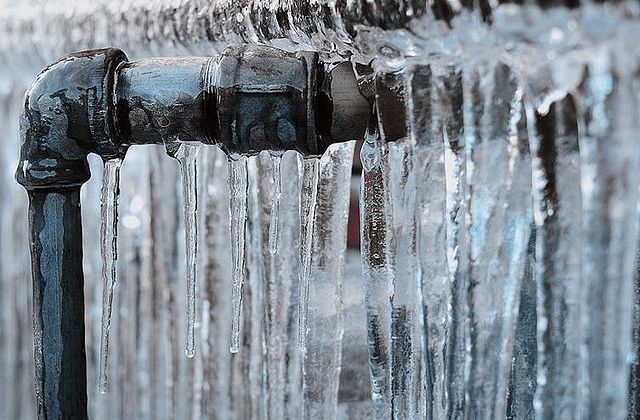Ways to Safeguard Plumbing System from Cold Weather: Essential Tips
Ways to Safeguard Plumbing System from Cold Weather: Essential Tips
Blog Article
What're your thoughts about Prevent Frozen Pipes ?

Winter can damage your pipes, especially by freezing pipelines. Right here's how to prevent it from taking place and what to do if it does.
Intro
As temperatures decrease, the danger of frozen pipes increases, potentially causing pricey repairs and water damage. Understanding how to avoid frozen pipelines is crucial for homeowners in chilly climates.
Prevention Tips
Shielding at risk pipes
Wrap pipes in insulation sleeves or utilize heat tape to secure them from freezing temperatures. Concentrate on pipelines in unheated or exterior locations of the home.
Home heating strategies
Maintain indoor spaces effectively warmed, particularly locations with pipes. Open up cabinet doors to allow cozy air to flow around pipes under sinks.
How to determine frozen pipes
Search for decreased water circulation from faucets, unusual odors or sounds from pipelines, and noticeable frost on subjected pipes.
Long-Term Solutions
Architectural changes
Take into consideration rerouting pipelines away from outside wall surfaces or unheated locations. Include additional insulation to attic rooms, cellars, and crawl spaces.
Upgrading insulation
Purchase top quality insulation for pipes, attic rooms, and walls. Correct insulation aids preserve regular temperature levels and reduces the threat of icy pipelines.
Safeguarding Outdoor Plumbing
Yard hoses and outdoor taps
Separate and drain pipes yard tubes prior to wintertime. Mount frost-proof faucets or cover outside faucets with insulated caps.
Recognizing Icy Pipes
What triggers pipes to ice up?
Pipelines freeze when revealed to temperatures below 32 ° F (0 ° C) for prolonged durations. As water inside the pipes ices up, it expands, taxing the pipeline walls and possibly triggering them to burst.
Threats and damages
Frozen pipes can lead to water system disturbances, residential or commercial property damages, and pricey fixings. Burst pipelines can flooding homes and cause substantial structural damages.
Signs of Frozen Pipes
Determining icy pipelines early can prevent them from bursting.
What to Do If Your Pipes Freeze
Immediate activities to take
If you presume icy pipes, keep faucets open up to eliminate stress as the ice thaws. Use a hairdryer or towels taken in warm water to thaw pipelines slowly.
Conclusion
Stopping icy pipelines needs proactive measures and quick feedbacks. By understanding the causes, indicators, and preventive measures, property owners can shield their pipes during winter.
5 Ways to Prevent Frozen Pipes
Drain Outdoor Faucets and Disconnect Hoses
First, close the shut-off valve that controls the flow of water in the pipe to your outdoor faucet. Then, head outside to disconnect and drain your hose and open the outdoor faucet to allow the water to completely drain out of the line. Turn off the faucet when done. Finally, head back to the shut-off valve and drain the remaining water inside the pipe into a bucket or container. Additionally, if you have a home irrigation system, you should consider hiring an expert to clear the system of water each year.
Insulate Pipes
One of the best and most cost-effective methods for preventing frozen water pipes is to wrap your pipes with insulation. This is especially important for areas in your home that aren’t exposed to heat, such as an attic. We suggest using foam sleeves, which can typically be found at your local hardware store.
Keep Heat Running at 65
Your pipes are located inside your walls, and the temperature there is much colder than the rest of the house. To prevent your pipes from freezing, The Insurance Information Institute suggests that you keep your home heated to at least 65 degrees, even when traveling. You may want to invest in smart devices that can keep an eye on the temperature in your home while you’re away.
Leave Water Dripping
Moving water — even a small trickle — can prevent ice from forming inside your pipes. When freezing temps are imminent, start a drip of water from all faucets that serve exposed pipes. Leaving a few faucets running will also help relieve pressure inside the pipes and help prevent a rupture if the water inside freezes.
Open Cupboard Doors
Warm your kitchen and bathroom pipes by opening cupboards and vanities. You should also leave your interior doors ajar to help warm air circulate evenly throughout your home.

Do you like reading about 6 Ways to Prevent Frozen Pipes? Put a remark directly below. We'd be pleased to know your thoughts about this blog posting. Hoping to see you back again later on. Sharing is nice. Who knows, you may just be helping someone out. Thanks a lot for your time spent reading it.
Go Services Report this page